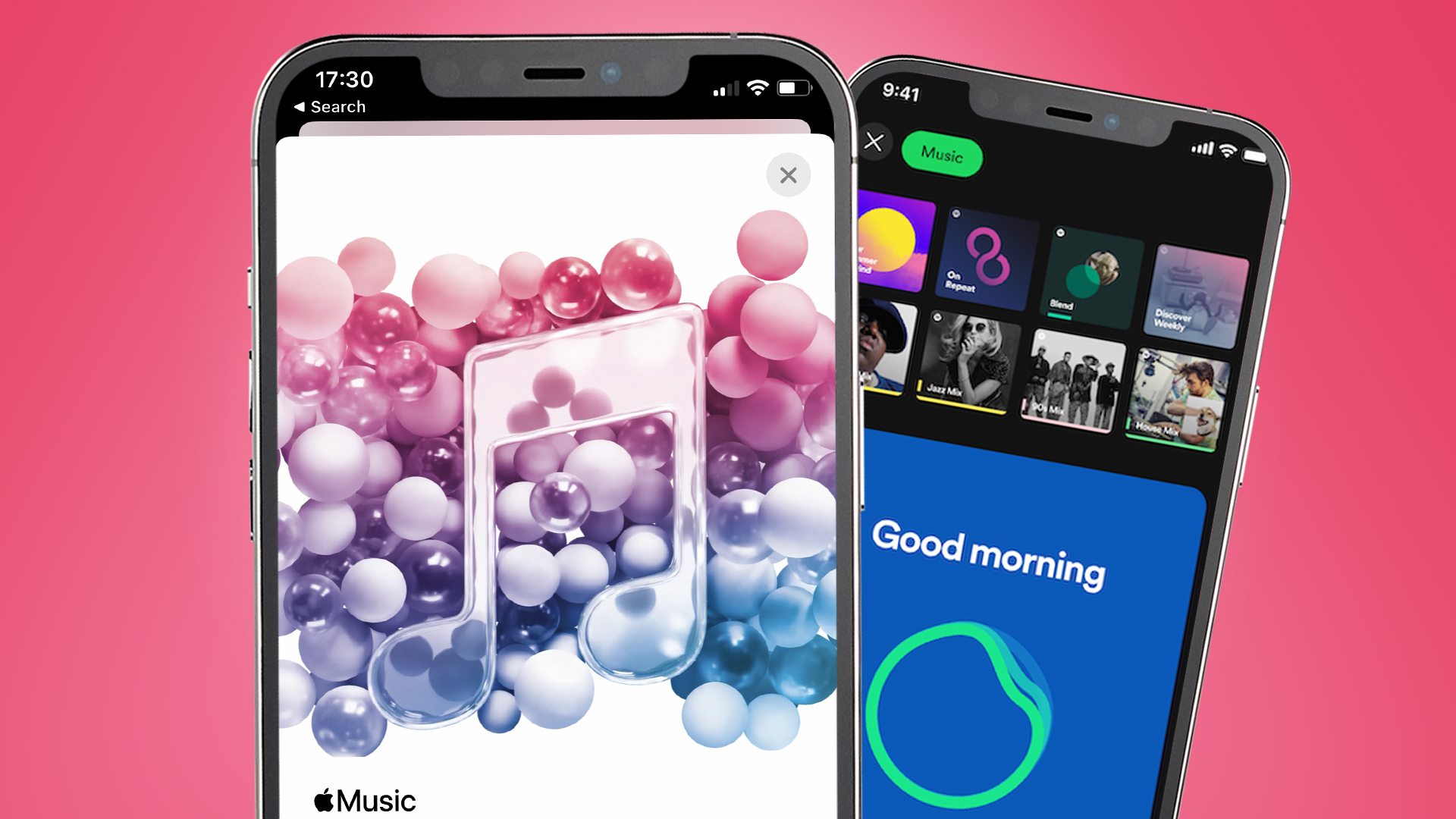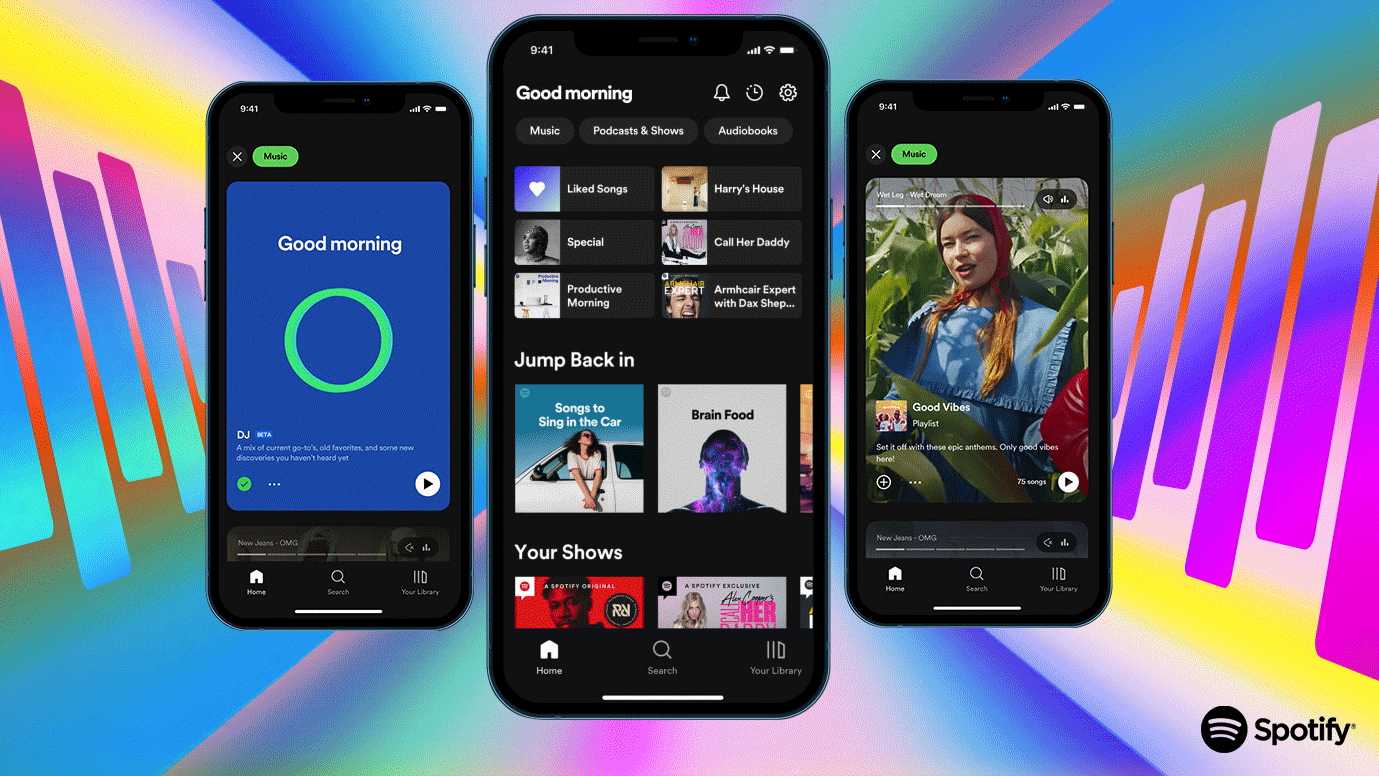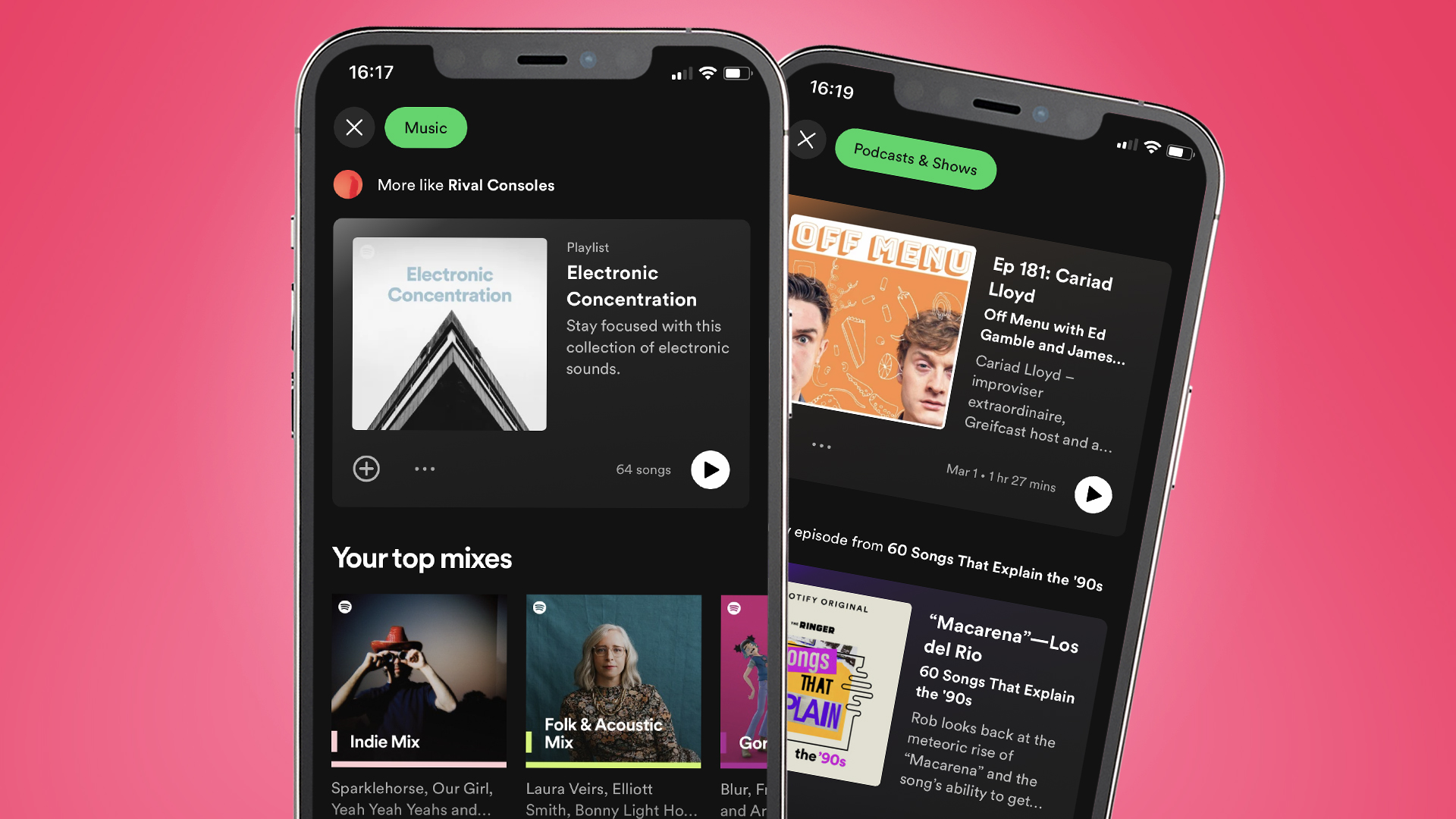My verdict on the new Spotify? It's time to switch to Apple Music
Opinion: Spotify is no longer the music-first app I need

Spotify, it’s been fun, but it’s time to queue that ‘sad indie’ playlist you’re so keen for me to listen to – I’m leaving for Apple Music.
I’ve been a Spotify Premium subscriber for over six years and been with the service for a decade. But the new Spotify redesign, which CEO Daniel Ek called “the biggest change to the platform since 2013”, is an experimental album too far for me.
The Spotify app’s redesigned Home feed isn’t actually as bad as I feared. The TikTok-style vertical scroll that confronts you when you tap ‘Music’ or ‘Podcasts & Shows’ has the slight try-hard feel of a Coldplay stadium show. There are hints of Instagram, Netflix and YouTube, too.

But this increasingly bloated mess is only part of the reason I’ve restarted my Apple Music three-month free trial. Aside from the sense that this is another Instagram moment – when an app’s original purpose becomes the support act to monetizing eyeballs – the new Spotify is really an admission that its business model is broken.
It isn't the only streaming service with that problem. But with Spotify consistently ranking towards the bottom of the league table for artist payouts, and features like the long-awaited Spotify HiFi further away than ever, it’s time for me to stage dive into the arms of Apple Music.
A new MTV moment
An alternative explanation for my desire to leave the new Spotify, other than it being objectively bad, is that I’m simply too old for it. Most Spotify users are aged 34 and under – and its youngest fans are more interested in visual music discovery. That’s a bit different from going to Pitchblack Playback to listen to an album in complete darkness.
This hit me when reading Spotify CEO Daniel Ek’s interview with Billboard, when he was asked to explain video-themed features like Canvas (the eight-second video loops you see in the background when playing a song) and the even longer Spotify Clips.
Sign up for breaking news, reviews, opinion, top tech deals, and more.
“It’s about looking to younger consumers for inspiration,” Ek explained. “If you think about it, in the music industry, when we went from having a radio to MTV, it was a hell of a lot better, and it allowed totally different artists to get a new way of communicating” he added. In other words, railing against the Instagram-ification of music streaming apps just makes you sound like a 21st-century equivalent of The Buggles.

But while there is an element of Principal Skinner’s “it’s the children who are wrong” to my Spotify exit, that isn’t the whole story. My main issue with Spotify’s new direction isn’t just the spread of video – after all, I grew up with MTV – but everything else it’s shoehorning in, like podcasts and audiobooks, to create one attention-grabbing glob of ‘content’. Not to mention blood-sucking schemes like Discovery Mode, where artists can exchange lower royalties for greater exposure.
Simple menus, like finding an album, are now buried under a pile of recommendations and sponsored promos. Our guide to the best Spotify tips and tricks includes many features that should be easier to find. And that’s before we get to Spotify’s comparatively poor record when it comes to sound quality and artist payouts…
Why Apple Music?
Apple’s music streaming service is by no means a shiny disco ball of perfection. Its recommendations engine, while much improved, still isn’t a patch on Spotify and I will miss my Discover Weekly playlist. I'm also keen to try out Spotify’s new AI DJ feature before I go, which hasn’t rolled out in the UK yet where I am based.
But for someone who wants a simple music player, without ‘curated previews’ and the constant background hum of monetization, Apple Music and Tidal are stretching their lead at the top of our guide to best music streaming services. Both offer CD-quality, hi-res lossless audio and support spatial audio to help them deliver music in Dolby Atmos, too.
Away from pure sound quality, there’s also a refreshing simplicity to Apple Music. It doesn’t try to cram podcasts into the app, keeping the two separate. I like that, for the same reason that I don’t want to go to a music festival to see Pixies followed on stage by Ezra Klein grilling a professor about the US elections. They’re both interesting, but they belong in different worlds.
Just checked our latest label (Test Card, ie first two albums) digital rates per stream - for comparison:Spotify €0.00243 (dragged down a bit by weird promo mode, but still low)Apple: €0.00640Tidal €0.00691Amazon (Premium, not Prime) €0.00939August 1, 2022
Then there’s the thorny, and hugely complex, issue of artist payouts. Spotify’s recently updated Loud & Clear website, which breaks down the economics of music streaming, is naturally spun in its favor. But the money that Spotify pays to rights-holders (now almost $40bn since the streaming service started) doesn’t necessarily reflect what goes to the actual artists.
These rates depend on a lot of factors, including where you stream the music, but it’s been hard to ignore breakdowns from some of my favorite artists like Public Service Broadcasting (above), that consistently place Spotify towards the lower end of the payout scale.
This is backed up by artist and label data from the likes of Digital Music News, which states that “historically, Apple Music has paid artists much better than its streaming music rival, Spotify” and found that this continued to be the case last year. Despite Spotify’s newfound keenness to help artists set up digital merch tables, this is another tick for Apple Music – alongside the introduction of new features like Apple Music Classical.
Long player
For me, the recent launch of Apple Music Classical – which subscribers will be able to download from March 28 – is a good illustration of the difference between Apple and the new Spotify.
I may never listen to Bach in spatial audio, but I appreciate Apple using its financial clout to at least do something interesting in the music streaming space. Meanwhile, Spotify spent what seemed like hours at its Stream On event crowing about video podcasts.
This doesn’t mean that Apple has discovered a way to make a simple music app sustainable – unlike Spotify, it’s simply able to treat Apple Music as a loss-leader for the iPhone.

The bigger problem is that no app, including Spotify, has yet found a way to make music streaming truly profitable. Spotify has only reported a profit once in its history and the main reason is because payouts to music rights holders account for around 70% of its total revenue.
That’s why Spotify is, understandably, looking beyond music for some actual money spinners. A few years ago, Spotify CEO Daniel Ek predicted that “more than 20% of all Spotify listening will be non-music content”. That’s now coming to fruition thanks to acquisitions like Gimlet (a podcast studio), Anchor (a podcasting platform) and Findaway (an audiobook service), plus a focus on video that conveniently yields better ad rates than audio.
The trouble for me is that this has made the new Spotify so bloated, confusing and downright annoying that I’m jumping ship to Apple Music – and taking all of my playlists with me using an app like Houdini.
Maybe I’ll return to Spotify again one day, but an encore looks increasingly unlikely.

Mark is TechRadar's Senior news editor. Having worked in tech journalism for a ludicrous 17 years, Mark is now attempting to break the world record for the number of camera bags hoarded by one person. He was previously Cameras Editor at both TechRadar and Trusted Reviews, Acting editor on Stuff.tv, as well as Features editor and Reviews editor on Stuff magazine. As a freelancer, he's contributed to titles including The Sunday Times, FourFourTwo and Arena. And in a former life, he also won The Daily Telegraph's Young Sportswriter of the Year. But that was before he discovered the strange joys of getting up at 4am for a photo shoot in London's Square Mile.